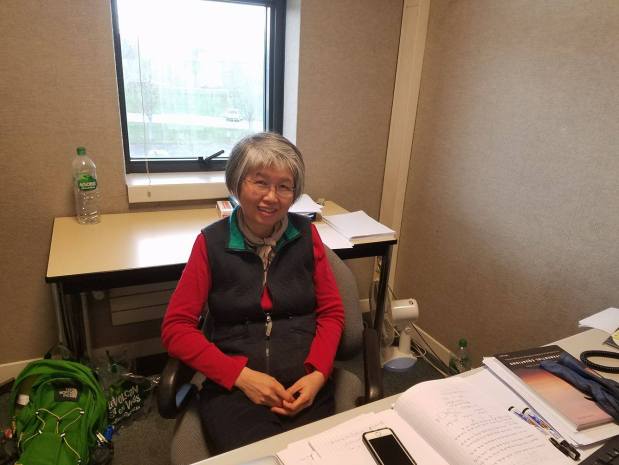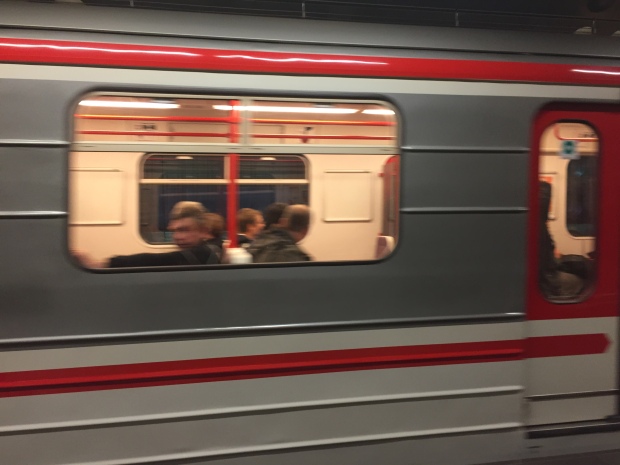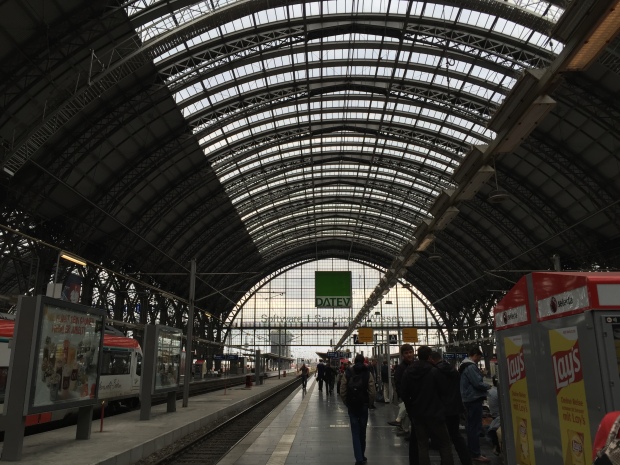As I look out my single window tonight and stare at the beautiful full moon, I am made to reflect on what else in life is full, or what makes life full? Is it good food and good company? Is it inner peace and joy? This may just be sleep-deprived me overthinking a giant, glowing space rock, but these things are nice to contemplate every once in a while. What do I really want from life? Well, I want to experience all of what life has to offer! I want to sail into uncharted waters, both literally and metaphorically, to explore and discover countless new places and states of being. I was a bit wary about traveling to one city more than once while I was studying abroad at GTL, but I fell too much in love the first time, that I couldn’t just do a ‘one and done’!

Sam I am!
A couple weeks ago, I visited Amsterdam and got to see a maritime museum and a cat cafe, but that trip didn’t even scrape anything off what this beautiful city had to offer me, so I decided to go back this past weekend and see more of it with a couple of my friends!
On Saturday, I went to the Van Gogh museum, which was definitely the highlight of the trip. All of the exhibits were laid out in a way that, when they walk through, people are taken on a journey through Vincent Van Gogh’s life as an artist, which I thought was really cool. One of the really great things about the museum, is that there is a special interactive tour that people can take which lets them experience some of Van Gogh’s most famous paintings through physical touch, smell, and song. This tour, fittingly named ‘Feeling Van Gogh’, was designed especially for the blind and visually impaired to enjoy Van Gogh’s works with their family and friends. Although I didn’t take the tour, I thought that this was a really interesting and cool way of experiencing visual art, and I think its very neat of the museum to do this kind of thing to accommodate to all kinds of people with disabilities that might otherwise keep them from visiting an art museum!

Almond Blossom (1890) by Vincent Van Gogh, courtesy of the Van Gogh Museum Amsterdam
That cool feature aside, as I walked through the museum, I got to see a lot of beautiful paintings and prints that I had only seen in my high school literature books, including The Bedroom (1888), Sunflowers (1889), and Self-Portrait As A Painter (1887-1888). Still, I discovered a piece that I had not yet seen before, Almond Blossom (1890), which I’ve got to say is my favorite Van Gogh piece to date. I got chills a couple times as I stared at all of these paintings, and maybe it was just the intense air conditioning, but there is something about studying Van Gogh’s life while in his own homeland of tulips and clogs that feels so surreal.

Sunflower maze outside of the Van Gogh Museum (2016), courtesy of the Van Gogh Museum Amsterdam
Definitely feeling blessed and highly favored after this last trip to Amsterdam, I’ve decided that traveling and art are two things that make me feel complete, and that make my life feel full. Looking at the full moon tonight makes me want to explore so many places and do so many things with my life, and I have realized that just because I’ve already seen one place, doesn’t mean that I have actually experienced it. With all that said, I hope that if you ever get the chance to travel to Amsterdam, you’ll pay a visit to the Van Gogh museum, a truly magical place. I wish I had spent longer in the Netherlands, but alas, classes and studying were calling me back, and those are two calls that one cannot miss! Thank you for tuning in this week, and until next blog post, au revoir!





 Elaine sat in her chair, blonde braid slung casually over one shoulder, working on some circuits homework when I approached her. Even though I had disturbed her studious work, she was very enthusiastic to talk to me. It was easy to tell right away that she would be an amazing RA; she was personable, welcoming and friendly. Elaine, a second year Materials Science Engineering (MSE) major, is a really very wonderful person. Here is her story.
Elaine sat in her chair, blonde braid slung casually over one shoulder, working on some circuits homework when I approached her. Even though I had disturbed her studious work, she was very enthusiastic to talk to me. It was easy to tell right away that she would be an amazing RA; she was personable, welcoming and friendly. Elaine, a second year Materials Science Engineering (MSE) major, is a really very wonderful person. Here is her story. 


 saw a tentacle unfurl under one of the rocks. My girlfriend instinctively took a stick and tried to coax it out, and we got so close to seeing the whole body, but the little guy was too shy. It was pretty amazing though to see something like that in the wild and up close!
saw a tentacle unfurl under one of the rocks. My girlfriend instinctively took a stick and tried to coax it out, and we got so close to seeing the whole body, but the little guy was too shy. It was pretty amazing though to see something like that in the wild and up close!













